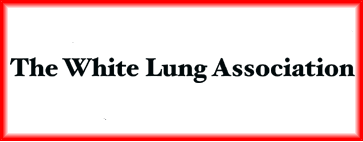

 |
 |
|---|
|
C054:99 24 November 1999
Asbestos Ban Comes Into ForceThe Asbestos (Prohibitions) (Amendment) Regulations 1999 come into force today (Wednesday 24 November) making it illegal to import, supply or use chrysotile (white asbestos) in Great Britain. The Regulations implement a domestic ban five years ahead of the deadline to comply with a European Directive. The technical amendment to the European Commission's Marketing and Use Directive requires all Member States to ban the marketing and use of chrysotile by 1 January 2005 but allows individual countries to implement the ban beforehand. Chair of the Health and Safety Commission (HSC), Bill Callaghan, said: "HSC conducted a widespread consultation last year which showed overwhelming support for a ban. Around 3,000 people die every year in Great Britain from asbestos-related diseases and the figure is expected to rise in the short-term because of the effects of past exposure. The fact that these regulations are being implemented well ahead of the deadline signals our commitment to protecting workers from the terrible legacy of asbestos." The Regulations are aimed at stopping the new use of asbestos and they also make it illegal to supply and use second-hand asbestos cement products. The Regulations also ban the supply and use of boards, tiles and panels which have been painted or covered with paints and textured plasters containing asbestos. The ban also applies to products containing asbestos components unless those products are already in use. Products currently in use which contain asbestos components, such as cars or pieces of industrial plant, can continue to be used and they can also be supplied second-hand to someone else. However, spare products containing asbestos that are currently in warehouses, waiting to be fitted or installed (for example, new seals and gaskets) can not be used. These products must be disposed of as hazardous waste. There are also a number of safety critical areas where the continued use of asbestos is permitted for a certain period of time while suitable substitutes are being developed. In these few areas it is not yet possible to stop using asbestos and move to products containing other materials. The law does not require people to remove existing asbestos in The law does not require people to remove existing asbestos in buildings, as this can create more risks to health than leaving it where it is. However, HSC will be consulting in the New Year on further proposals concerning the effective management of asbestos in workplace buildings. Copies of The Asbestos (Prohibitions) (Amendment) Regulations 1999 Statutory Instrument (SI) 1999 No. 2373 are available from the Stationery Office. Notes to Editors 1. The Asbestos (Prohibitions) (Amendment) Regulations 1999 were signed by the Deputy Prime Minister, John Prescott, and laid in Parliament on 24 August 1999. 2. Regulation 8 (1A) of the Control of Asbestos at Work Regulations states that where a suitable substitute for asbestos exists, it should be used in place of asbestos. As a result, the amount of asbestos being used in this country has fallen. In 1964, 186,946 tonnes of raw asbestos, including crocidolite (blue asbestos) and amosite (brown asbestos), were imported into the United Kingdom. In 1998 only 1,840 tonnes of raw chrysotile were imported into the UK. 3. Exposure to asbestos in any of its three forms (blue, brown or white) can cause potentially fatal lung diseases, for example, asbestosis, lung cancer and mesothelioma. The Asbestos (Prohibition) Regulations 1985 banned the import, supply and use of blue and brown asbestos. 4. The areas where asbestos can continue to be used are: PUBLIC ENQUIRIES: Call HSE's InfoLine, tel: 0541 545500, or write to: HSE Information Centre, Broad Lane, Sheffield, S3 7HQ. PRESS ENQUIRIES: Journalists only: HSE Anita Sedgewick 0171-717 6902. HSE information and press releases can be accessed on the Internet
|
|---|